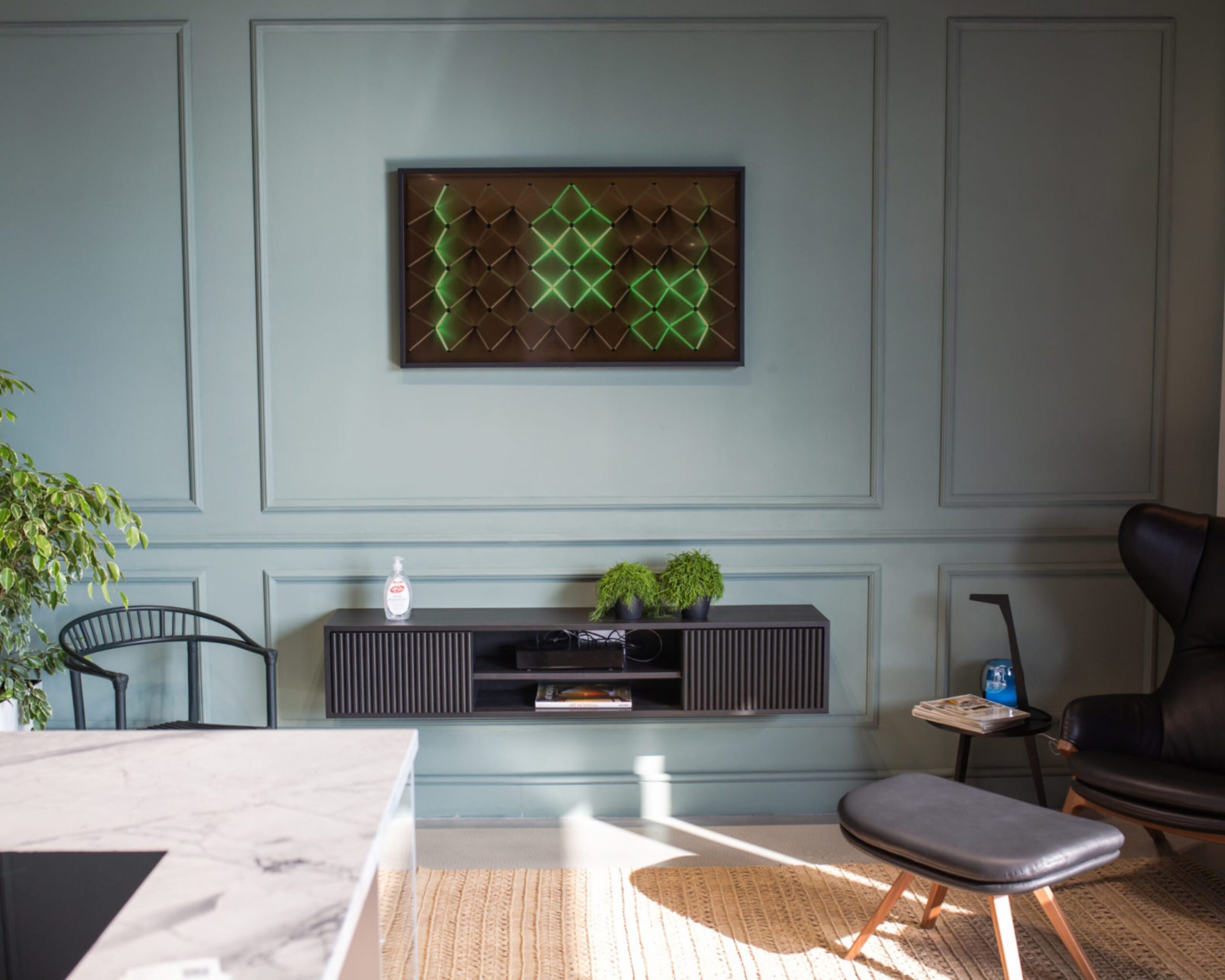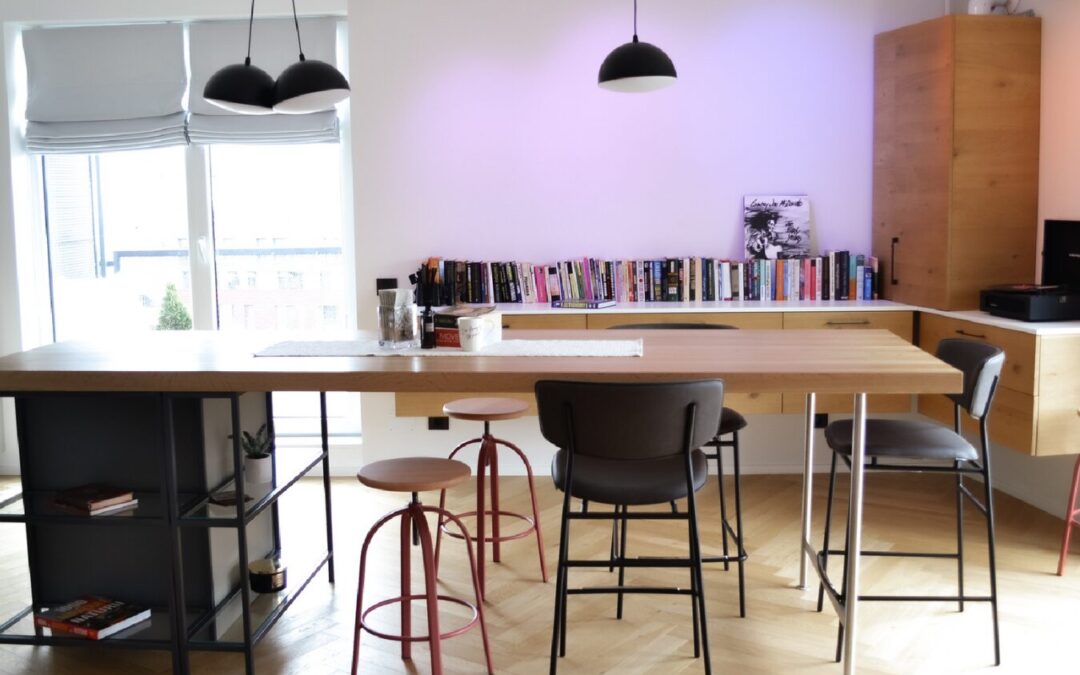The Rise of Smart Homes
Technology is increasingly transforming our daily lives, and our homes are no exception. Digital advancements are reshaping the ways we work, live, and interact with our personal environments. Smart home technology, from connected devices to automated systems, plays a crucial role in managing indoor environments more effectively than ever, enhancing productivity, comfort, and overall quality of life.
This article explores how design and smart home technology merge to create adaptive living spaces that respond to human behavior.

What Does Smart Home Technology Do?
It manages home conditions based on the homeowner’s routines, habits, and needs, giving them the freedom of shaping their environment by adjusting lighting, temperature, and/or sound. Beyond automation, these smart features positively influence focus, relaxation, and well-being.
Supporting hybrid work
Hybrid work has blurred the lines that once separated work from home life, and smart home technology has played a part in this change. Here are some ways smart homes can ease hybrid work:
- Improving work conditions: remote workers can adjust temperature, lighting, and air quality via smart devices, ensuring thermal and visual comfort.
- Automating household tasks: smart devices handle lighting and heating, freeing time and reducing distractions.
Research shows that smart home technologies can improve productivity and psychological well-being for remote workers (Marikyan et al., 2021).
Supporting well-being
Beyond supporting remote work, Cho and Kim (2022) highlight additional categories in which smart homes can support a homeowner’s needs and well-being, both directly and indirectly.
- Entertainment: Smart TVs and media rooms support leisure activities for relaxation.
- Social communications: Platforms for resident interaction and shared spaces reduce isolation and foster a sense of community.
- Energy conservation: Devices that monitor and manage energy usage contribute to environmental sustainability and reduce costs.
Case Study – Kuiba’s Adaptive Home
An outstanding example of an adaptive home is represented by a project done by Kuiba for an anonymous client. The 1,350m2 space combines smart home technology with advanced sustainability features, creating comfort and efficiency.
Thermal comfort is achieved thanks to underfloor heating and ceiling-integrated cooling, powered by water-source heat pumps. During winter, the pumps heat the house and provide hot water, while in summer, they cool the space. Photovoltaic panels support the hot water systems, and any extra energy reduces the need for the pumps. Additionally, windows in precast frames are fully integrated with the house’s insulation, keeping the energy use minimal.
Inside, the smart home system offers full control over temperature, lighting, and energy use in every room, offering the client the freedom to comfortably manage their home from any location. Safety is built in through video surveillance, intrusion detection, smoke and carbon monoxide sensors, and flood detection, protecting the home and reducing waste at the same time.
Though complex and large in scale, this project shows how smart technologies can make homes more adaptive, sustainable, and comfortable for everyday life.
Challenges
Despite the benefits, some experts agree there are some challenges to consider (Webber, 2024).
- Affordability: Complex systems might not be accessible to all homeowners. Therefore, focusing on smaller features such as smart plugs, smart bulbs, and voice assistants, can make a difference.
- Privacy: As smart devices connect more of our homes, protecting personal data becomes essential. It’s important to check that your devices have strong security and clear privacy policies.
Conclusion





























